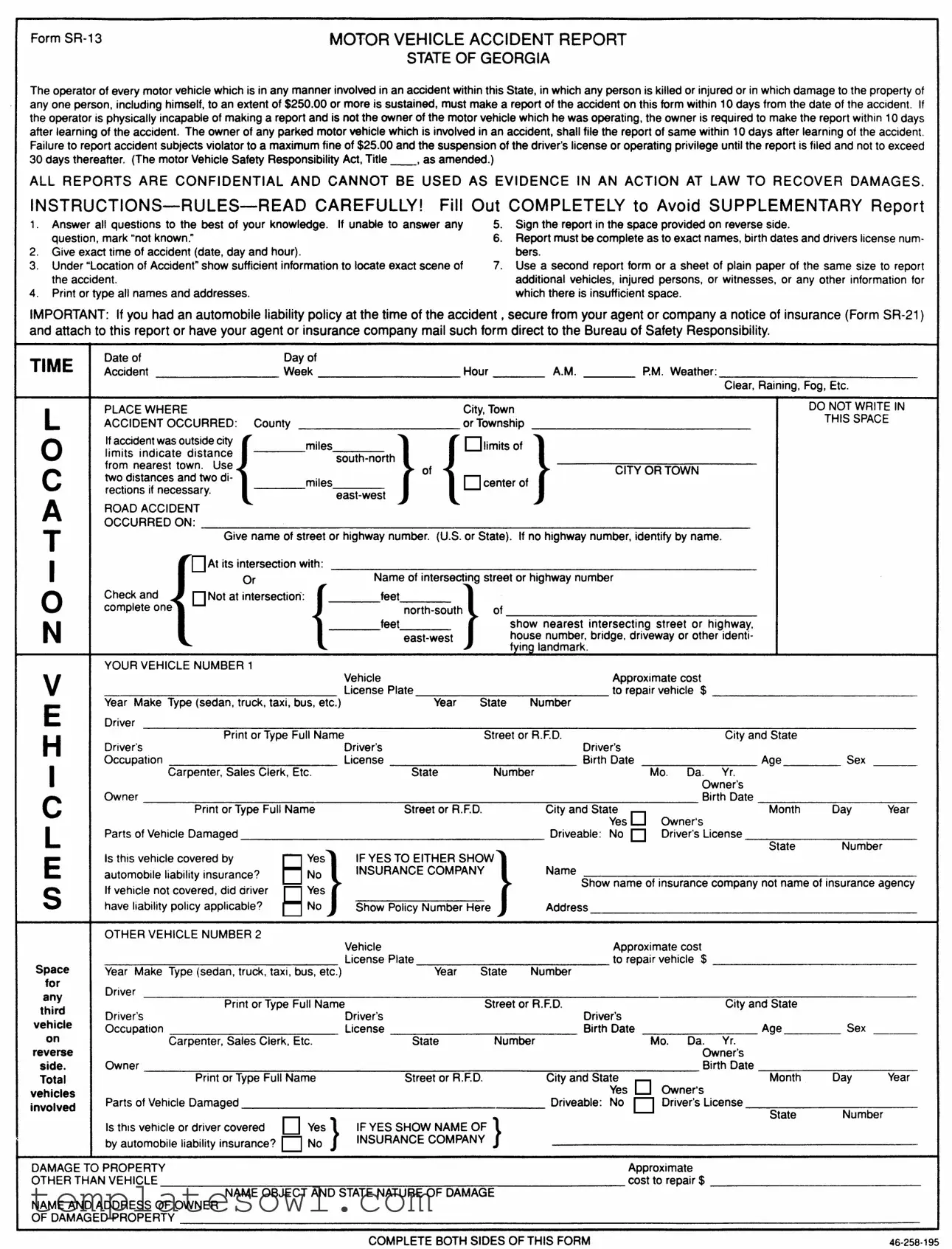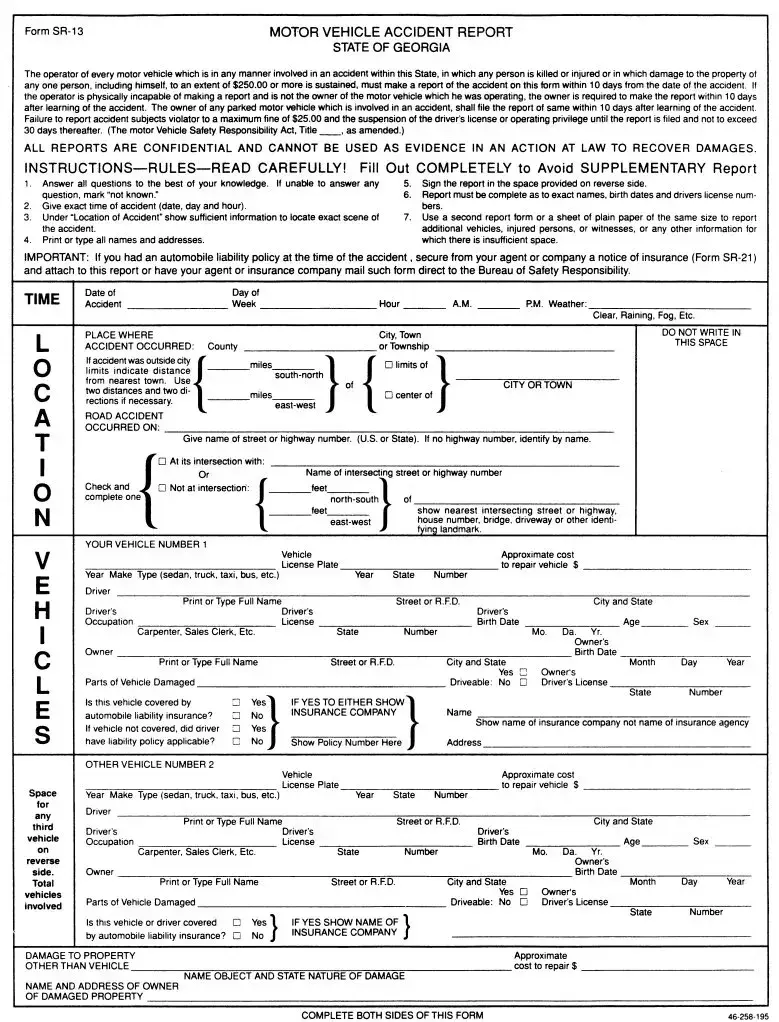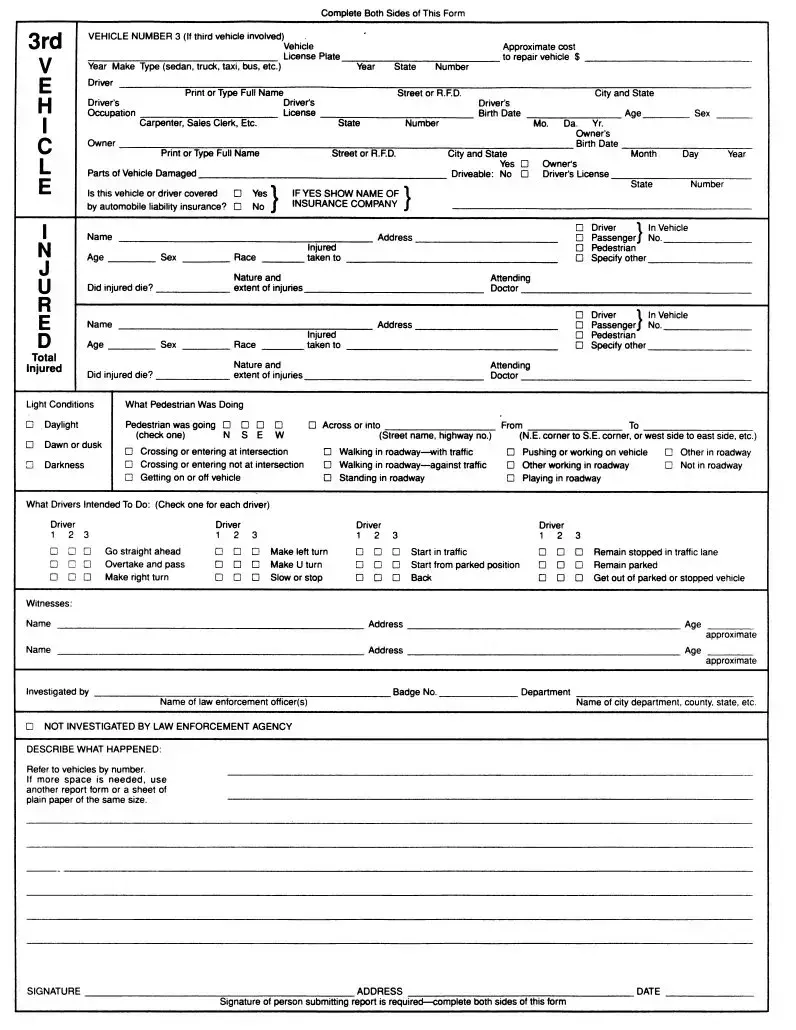What is the purpose of the Personal Accident Report SR 13 GA form?
The Personal Accident Report SR 13 GA form is designed for operators of motor vehicles involved in an accident in Georgia. It is a tool for reporting incidents where individuals are injured, killed, or where property damage is of significant value, specifically $250.00 or more. This form provides a structured way to capture necessary information about the incident, facilitating better understanding and analysis of accidents within the state.
Who is required to file this report, and within what time frame?
The operator of any motor vehicle involved in an accident that meets the criteria must file the report. This includes cases of personal injury or damage exceeding $250.00. The report must be submitted within 10 days of the accident. If the driver is unable to file the report, the vehicle's owner is responsible for submitting it as soon as they become aware of the incident. A similar obligation falls upon the owner of a parked vehicle that is involved in an accident.
What happens if someone fails to file this report?
Failure to report an accident can lead to consequences. Individuals may incur a maximum fine of $25.00. Furthermore, their driver's license or operating privilege may be suspended until they file the required report. This suspension cannot exceed 30 days. Thus, timely reporting can help avoid these penalties.
Are the details of the report confidential?
Yes, all reports filed using the SR 13 GA form are confidential. They cannot be used as evidence in lawsuits to recover damages. This confidentiality is important for protecting the privacy of the parties involved in the accident.
What information do I need to provide on the form?
When filling out the form, detailed information is required. This includes the exact time and date of the accident, specific location information, names and addresses of all parties involved, and details about any vehicles and injuries. If additional space is needed, it is acceptable to use a separate sheet of paper. It is important to ensure all information is accurate to avoid complications.
What should I do if multiple vehicles or witnesses are involved?
If there are multiple vehicles involved or if there are witnesses to the accident, you should report all relevant details. Use a second report form to document additional vehicles or call attention to significant witnesses or other information that may not fit on the primary form. Be thorough in capturing all data to ensure a complete account of the event.
Can I submit the report electronically?
Submission methods for the SR 13 GA form may vary, but traditionally, the form is expected to be submitted in hard copy. Verify with your local authorities or the Georgia Department of Motor Vehicle Safety for the most current submission methods, as electronic filing options may have been introduced or updated recently.


